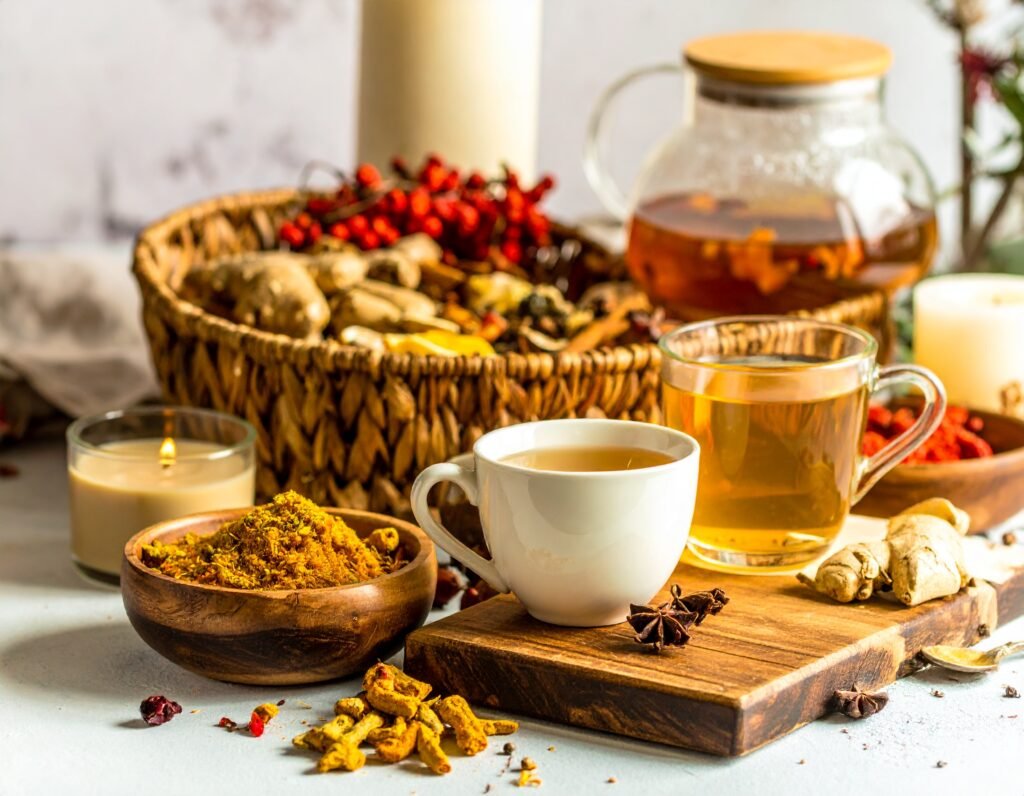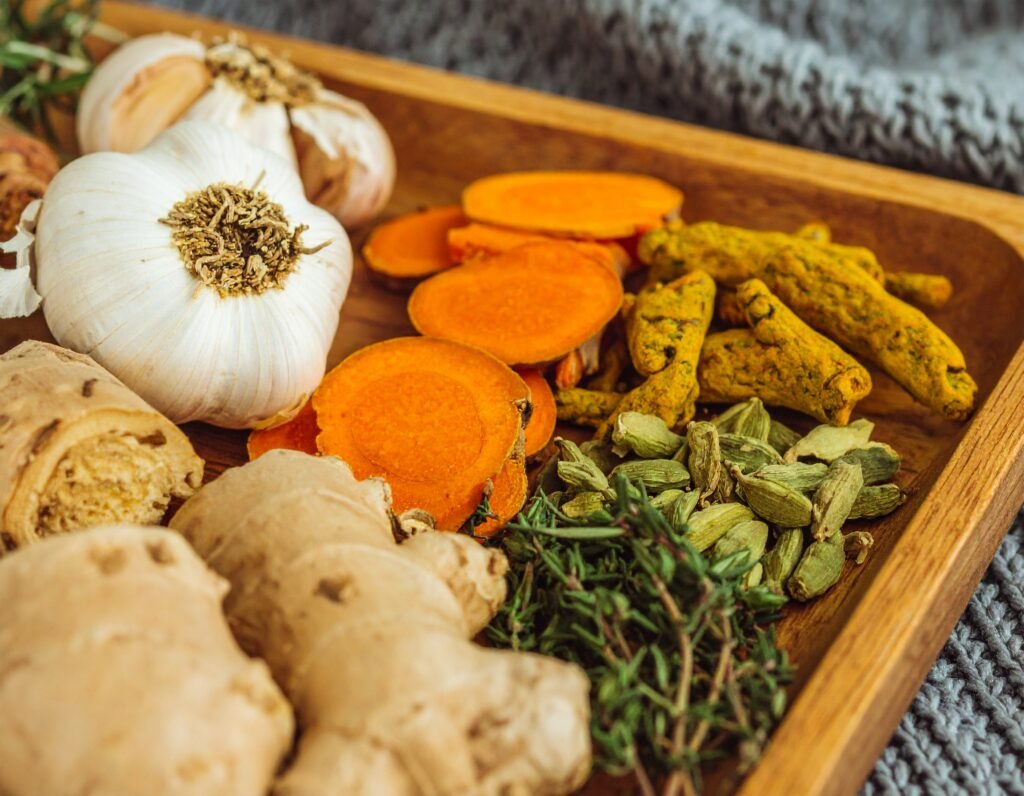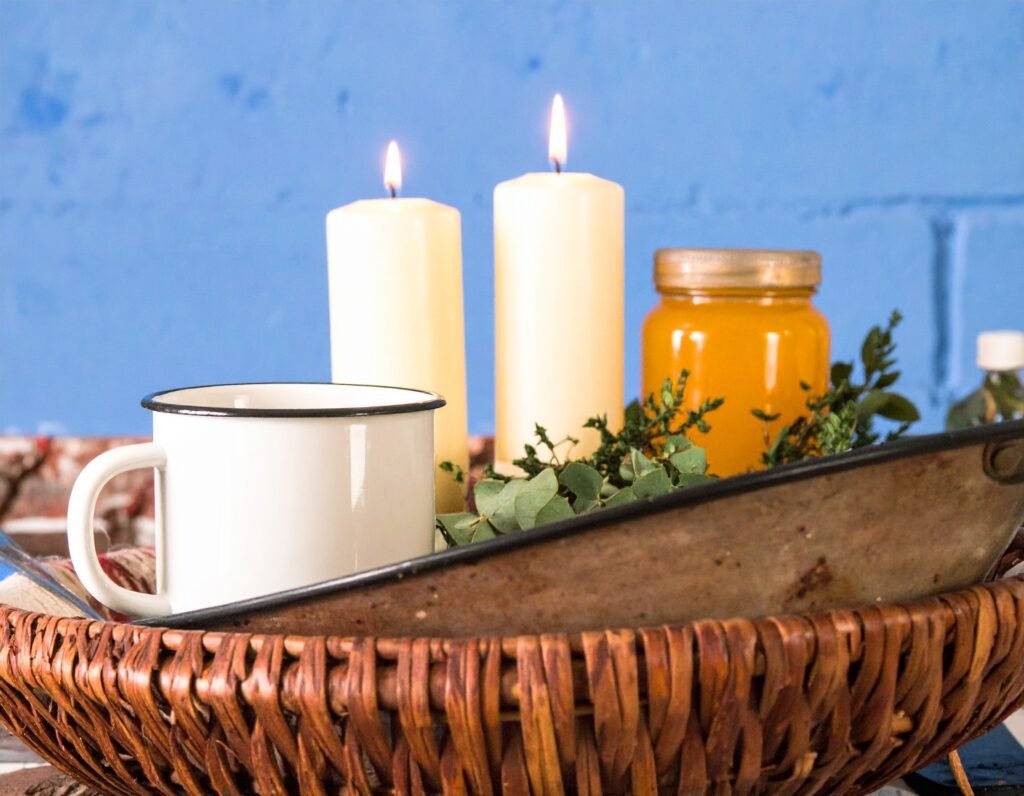Stay Healthy All Winter: How to Grow, Store & Use the Best Roots for Immunity
Warm, protective, and garden-grown—ginger, turmeric, astragalus, burdock, and garlic are classic allies for cold months. Learn how to plant, store, and turn them into simple teas, soups, and daily tonics.

Immunity Garden Planner
Design a season-by-season bed for ginger, turmeric, garlic, burdock, and astragalus—plus harvest dates and easy tonic recipes for cold months.
Get the plannerWellness for winter begins below ground. When cold air bites and days get short, your body naturally craves warmth, circulation, and steady immune support. That’s where roots shine. Ginger and turmeric offer heat and antioxidant power; astragalus and burdock are classic “tonic” roots for seasonal resilience; and garlic brings well-known culinary magic along with robust, time-honored winter support. With a little planning, you can grow these allies at home, store them for months, and turn them into comforting teas, broths, and syrups that fit effortlessly into your week.


Why roots help in winter (and safety)
Roots concentrate energy and protective compounds to sustain plants through cold. In the kitchen, that translates into warming circulation support (ginger), antioxidant and anti-inflammatory activity (turmeric’s curcuminoids), and time-tested tonic benefits (astragalus and burdock in traditional systems). Garlic adds sulfur compounds and beloved flavor that makes “healthy” food craveable. For evidence overviews, see resources from NCCIH and university extensions linked below. Always check personal tolerances, medications, and allergies—especially with concentrated extracts—and talk with your clinician if you have questions.
NCCIH: Ginger NCCIH: Turmeric NCCIH: Astragalus
Did you know?
Many gardeners harvest astragalus and burdock after frost—when top growth fades, roots are dense, long, and ideal for drying or simmering into broths.
Best roots to grow for winter strength
- Ginger: Likes warmth, moisture, and filtered sun; containers make it easy indoors. Zingy heat supports cozy circulation.
- Turmeric: A cousin to ginger; grow similarly for bright orange rhizomes rich in curcuminoids.
- Astragalus: A hardy garden perennial/annual (depending on region) grown from seed; thin “tongue depressor” roots dry beautifully.
- Burdock: Deep taproot; plant in loose soil or tall beds. Adds earthy sweetness to broths and stir-fries.
- Garlic: Plant cloves in fall for a summer harvest; cure and store for cold-season cooking.


Harvesting & smart storage (so potency lasts)
Ginger & turmeric: Harvest when foliage yellows. Brush soil away, rinse gently, pat dry, and store unpeeled in the fridge for 2–3 weeks, or freeze whole knobs. For longer storage, slice and dehydrate on low heat, or grate and freeze in teaspoon portions.
Astragalus & burdock: Dig when the plant dies back. Scrub, slice lengthwise, and dry thoroughly until snap-dry; store in airtight jars with desiccant. These are ideal for simmering in long-cook broths.
Garlic: Cure bulbs (2–3 weeks in airy shade) until skins are papery, then trim and store in a cool, dark space. Peel a week’s worth at a time for easy daily use. University extensions have excellent curing/storage guides.
Quick storage checklist
- Keep roots cool, dark, and dry—moisture is the enemy of long storage.
- Label jars with plant + date; refresh every season for best flavor and aroma.
- Drying tip: brittle, “snap-able” slices store best in glass away from light.
Easy daily uses & recipes
Small, daily rituals add up. Aim to include one root-based sip or spoon each day. Rotating flavors keeps it interesting and broadens nutrient variety.
- Warming Root Tea: Simmer 4–5 thin slices each ginger and turmeric with 2–3 astragalus sticks in 3 cups water for 25 minutes. Strain; add lemon and a touch of honey. Thermos it for the day.
- Immune Broth: Add burdock matchsticks, smashed garlic, and ginger slices to chicken or veggie stock; simmer 40–60 minutes. Sip plain or ladle over rice and greens.
- Honeyed Root Spoon: Cover grated ginger and a pinch of turmeric with raw honey; rest 24 hours, then take a teaspoon in tea or warm water.
- Garlic Everyday: Stir crushed garlic into olive oil with parsley and lemon; drizzle on soups or toast just before serving.


Active compound spotlight
Gingerols & shogaols (ginger), curcuminoids (turmeric), polysaccharides (astragalus), and inulin/lignans (burdock) are frequently discussed for seasonal wellness contexts. See NCCIH and academic resources for overviews and safety notes.
This herbal recipe is shared for educational purposes only, based on traditional use and available sources. It is not medical advice. Please consult your healthcare provider before use, especially if pregnant, nursing, or on medication.
HoneyBurn Benefits: Plant & Bee Blends for Natural Pain & Inflammation Relief – How It Works & How to Use
Pair your kitchen roots with a ready-to-use daily formula that features botanicals and bee-based ingredients designed for comfort during cold months. See how HoneyBurn fits alongside ginger tea, turmeric broth, and your winter routine.
Read the HoneyBurn reviewDisclosure: We may earn a commission if you purchase through our links—at no extra cost to you. We only recommend options we’d share with family.
Ready to root your immunity?
Get weekly garden-to-kitchen guides, broth & tea recipes, and simple storage checklists—built for real winter life.
Subscribe nowAnti-Inflammation Starter Kit
Your 7-day plan with shopping list, ginger–turmeric tea timing, and easy broth add-ins—stackable with the Immunity Garden Planner.
Download the kit-
How to Grow Coffee at Home: Planting, Care & Harvest Guide
How to Plant, Care for & Harvest Coffee at Home — From Seed to Cup Naturally How to Grow Coffee at Home: Planting, Care & Harvest Guide Growing coffee connects patience, soil, and sunlight into a rhythm that mirrors life itself. My father tends to 15 coffee plants, harvesting around 30 pounds twice a year…
-
Discover the Ceremony: Full Ancient Ethiopian Coffee Steps
Discover the Ceremony — The Ethiopian Coffee Steps Discover the Ceremony: Full Ancient Ethipian Coffee Steps Long before coffee became a global habit, Ethiopia kept it sacred. The ceremony isn’t just brewing — it’s storytelling, purification, and communion. Each movement, from washing the green beans to pouring the final round, holds meaning. It’s a rhythm…
-
Peppermint Tea Recipes & Year-Round Wellness Uses
Peppermint Tea Benefits for Digestion & Year-Round Wellness — Health Intel Daily Cluster: Digestion & Gut Health Peppermint Tea Benefits for Digestion & Year-Round Wellness From cooling teas to soothing steams—learn how peppermint supports digestive balance, seasonal immunity, and everyday vitality. Jump to: Peppermint Tea Recipe Seasonal Wellness Uses Plant-Based Support Did You Know? References…
-
DIY Rosehip Blends & Advanced Skincare Uses
DIY Rosehip Blends & Advanced Skincare Uses — Health Intel Daily Hair, Nail & Skin DIY Rosehip Blends & Advanced Skincare Uses Recipes for scar-fading serums, brightening facial oils, and anti-aging elixirs—plus insights into rosehip’s healing legacy. Jump to: DIY Serum Recipes Application Tips Did You Know? References & Resources FAQ DIY Blends with Rosehip…